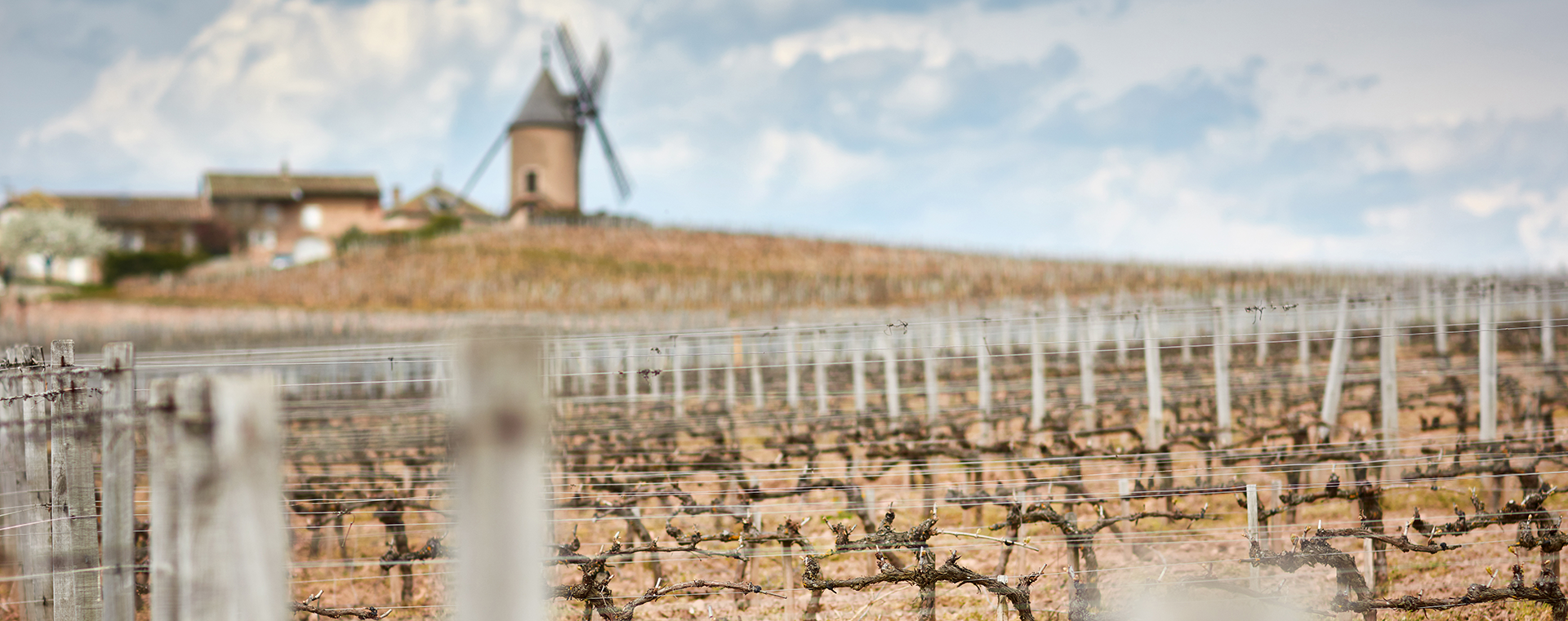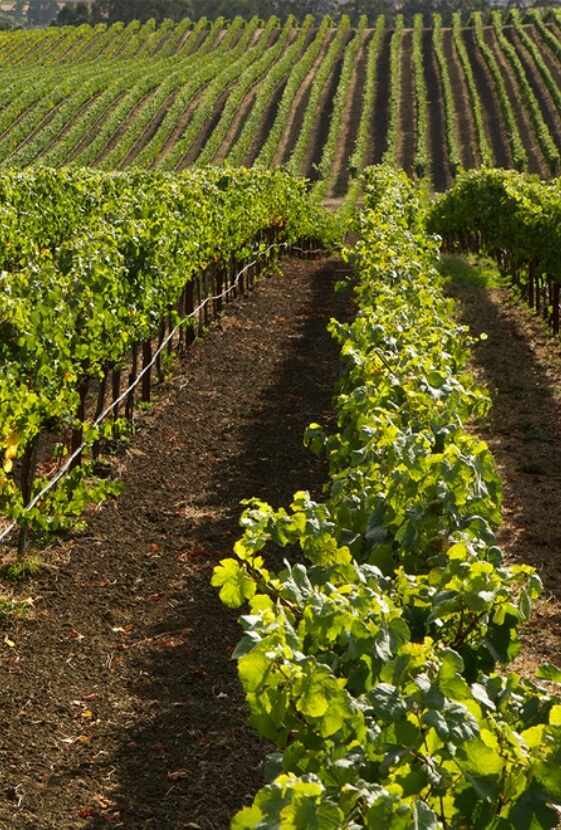
Terroir & Vineyards

The Beaujolais region, located immediately to the south of the Mâconnais, is known for its sandy clay over granite soils that marry perfectly with the Gamay grape. Most vines are staked individually in gobelet fashion. At Château des Jacques, estate-grown fruit is cultivated on 196 acres in the Moulin-à-Vent and Morgon crus. All vineyards are sustainable and are worked according to the natural cycle of the vines. Château des Jacques uses no fertilizers.
The Moulin-à-Vent and Morgon Crus
Of the 10 crus of Beaujolais, both Moulin-à-Vent and Morgon are considered distinctive due to their soil. The soil of Moulin-à-Vent is rich in iron and manganese, which seems to give the wines a particular rigidity in youth and an ability to age for decades. Overall Moulin-à-Vent is considered a feminine wine. Morgon centers on the Mont du Py, whose slopes are manganese-rich schist and give the wines a more masculine rigor.
Three Appellation Levels
Wines are produced at three appellation levels. Château wines, or regional wines, are a priority, and are supplemented with Clos and Grands Clos (both single-vineyard) wines using the process known as réplis, to elevate the quality above that expected of regional wines.
Clos wines are single-vineyard wines. Château des Jacques’ Clos vineyards lie on south- and southeast-facing slopes. Vines are 30 to 60 years old and are trained in gobelet fashion.
In Moulin-à-Vent:
Clos des Thorins (7.5 acres) An amphitheater of vineyards that concentrate the sun’s heat and give to the wine a pleasing fresh fruit quality.
Champ de Cour (5 acres) Granitic soil enriched with ancient sediments from the Sâone River give the wine a rich expression and a distinct wildness.
In Morgon:
Roche Noire (14.5 acres) with soil of hard black schist.
Grands Clos vineyards are the essence of the appellation and produce unique wines that can be seen as an echo of the Grand Cru status in the Côte d’Or. Château des Jacques’ Grands Clos vineyards lie on south- and southeast-facing slopes. Vines are 30 to 60 years old and are trained in gobelet fashion.
In Moulin-à-Vent:
Grand Clos de Rochegrès (20 acres) This vineyard has the oldest soil of all the clos, with a thin subsoil mostly composed of pink sand (grès). The wines of Rochegrès develop an impressive structure and power.
Clos du Grand Carquelin (12.4 acres) A unique granitic soil yields wines of great complexity and a dynamic finish.
La Roche (3.7 acres) Located on a vein of quartz, this vineyard creates wines of strong minerality and precise aromatic definition.
In Morgon:
Côte du Py (13 acres) These famed vineyard slopes on Morgon’s central Mont du Py have hard black schist soil.



